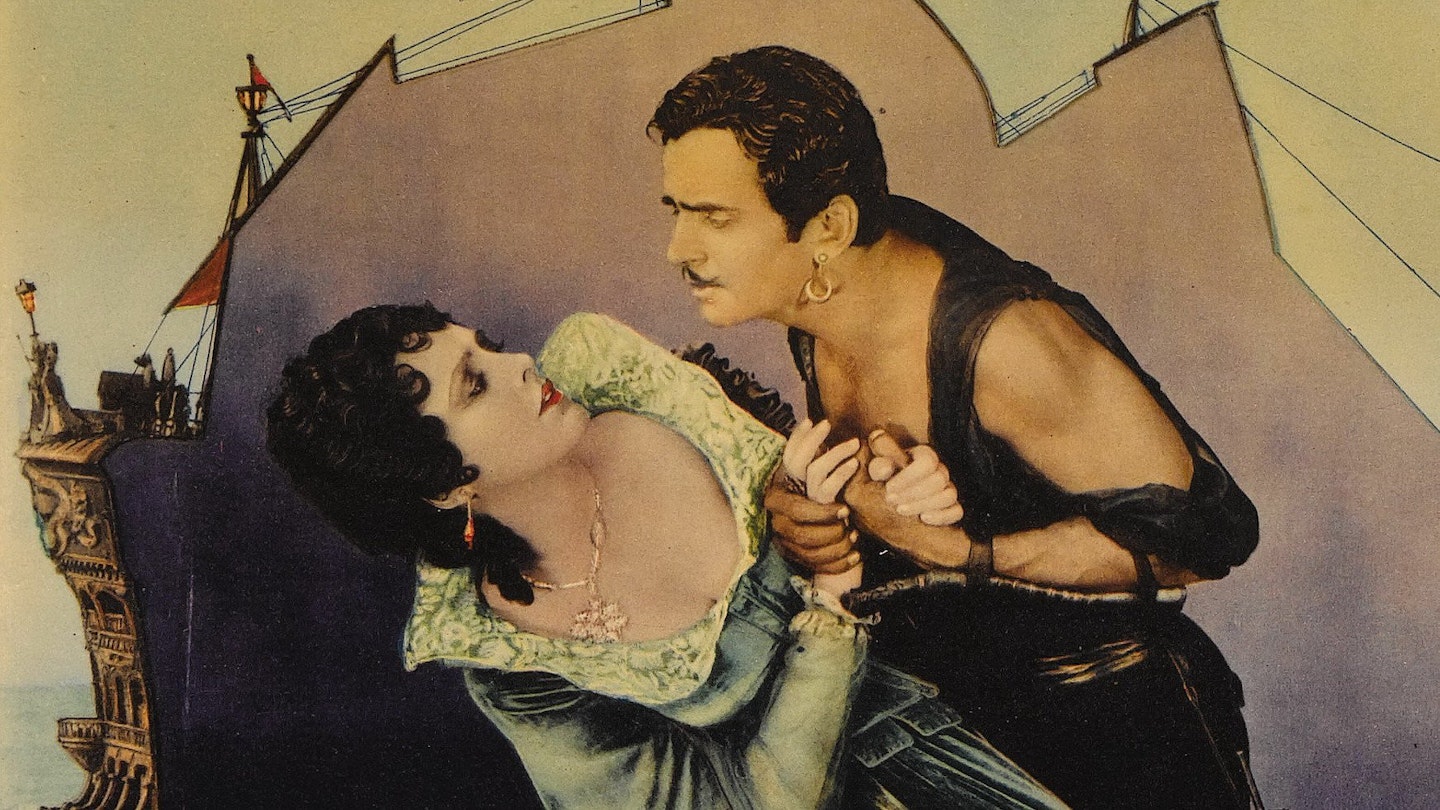Holding court at their lavish mansion, Pickfair, Douglas Fairbanks and Mary Pickford were the closest Hollywood ever came to royalty. She was America's Sweetheart and he was its dashing beau, triumphing over adversity with his unique brand of initiative, energy and athleticism. Fairbanks had made his name playing rugged individualists with a passion for traditional values that exposed the emptiness of modern life.
But, following films like The Knickerbocker Buckaroo and His Majesty, The American (both 1919), he shifted gear with The Mark of Zorro (1920) to embark on a series of period adventures that transformed him into cinema's first true action hero. Setting standards that only Errol Flynn (and then never with any consistency) has since matched, Fairbanks single-handedly forged the classic image of the silver screen swashbuckler. He was every inch an auteur.
Although he hired reputable directors, Fairbanks pseudonymously wrote his own scripts and devised his own stunts, while his producer credit ensured he had the last word on every creative decision. In each successive picture, he sought to exceed his past achievements recreating 17th century Paris in meticulous detail for The Three Musketeers (1921), constructing the biggest set Hollywood had ever seen for Robin Hood (1922) and experimenting with cutting-edge special effects for The Thief Of Bagdad (1924).
Yet by the middle of the decade, the critics were beginning to snipe at the over-familiar mix of tableaux and derring-do. So, with The Black Pirate, Fairbanks was determined to fashion the most thrilling and visually sumptuous adventure yet witnessed. A Boy's Own compression of every conceivable pirate myth, the storyline was, actually, quite simple. Having survived the pirate attack that brought about his father's death, Duke Michel of Arnoldo (Fairbanks) swears vengeance and inveigles himself onto the cutthroats' ship. Proving his prowess with the solo capture of a passing vessel, the stranger is hailed as the pirate king, until suspicions are aroused by his determination to save a kidnapped Spanish princess (Dove).
If the plot was unremarkable, the imagery was anything but. Filmed off the coast of Catalina Island, the action sequences were an ingenious blend of live-action and elaborate model work. But what made them so unforgettable was Fairbanks' use of Technicolor. Features had employed this two-colour process before, but never on such a grand scale. The star spent six months shooting tests so that every prop, character and costume registered exactly on the limited colour scale. According to the press blurb, designer Carl Oscar Borg hired an army of researchers to authenticate every detail of maritime practice.
But what the punters really wanted was the pace, spectacle and excitement that only the Peter Pan of movies could produce. And they weren't disappointed. The stunts were among Fairbanks' most breathtakingly daring and reckless. The sequence in which Michel launches a one-man assault on the unsuspecting galleon is perhaps the most famous Fairbanks footage of all. Having swept to the top of the mizzen, he clutches onto his knife and proceeds to slash and slide his way down the length of a sail before vaulting onto the deck, in order to send a cannon crashing overboard and a couple of pirates shooting up the rigging. Then, gliding down a billowing topsail, he swings across a series of ropes to reach the forecastle, where he trains a pair of cannon on the now vanquished crew.
It's pure daredevil magic and seems all the more exhilarating because it's the dynamism of one man that captures the imagination and not some soulless digital effect. It also sums up Fairbanks' perpetual motion approach. Watching Errol Flynn reprise the trick in Against All Flags (1952), it's evident that a stuntman and not the star is taking all the risks and, thus, the illusion is shattered. Yet, for all his boundless bravura, the one thing Doug never was was a romantic hero. He always lacked Valentino's talent for smouldering passion, and was happy to forego the clinches, although it has been rumoured that this was more to do with Pickford's possessiveness than his own reluctance. That's why, it's claimed, she insisted on doubling for Billie Dove in this film's final embrace.
By the time he made The Gaucho in 1929, the talkies had almost completed their conquest of Hollywood and Fairbanks was actively outliving his era. It was a characteristically Everyman gesture from a star who took his hero status seriously.
